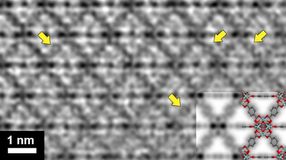An end to animal testing for drug discovery?
As some countries and companies roll out new rules to limit animal testing in pharmaceutical products designed for people, scientists are stepping in with a new way to test therapeutic drug candidates and determine drug safety and drug interactions — without using animals. The development of "chemosynthetic livers," which could dramatically alter how drugs are made.
Mukund Chorghade, Ph.D., noted that the European Union enacted new regulations in 2010, known as REACH, that aim to dramatically reduce the use of animals in testing. But the development of new pharmaceuticals still depends heavily on the time-consuming and expensive process of animal testing.
"Researchers in drug discovery make small quantities of new potential drug compounds and then test them in animals," said Chorghade, who is chief scientific officer of Empiriko Corporation and president of THINQ Pharma. "It is a very painstaking, laborious and costly process. Frequently, scientists have to sacrifice many animals, and even after all that, the results are not optimal."
Typically, when researchers are onto a new compound that could address an unmet human health need, they test it on animals to see if it's toxic before taking it into clinical trials with human subjects. They figure this out by doing something called metabolic profiling. That is, after giving an animal a test drug, the experimental compound does its designated job in the body until the liver breaks it down. Then researchers try to detect the resulting, minute amounts of molecular byproducts, or metabolites. It's these metabolites that are often responsible for causing nasty side effects that can derail an otherwise promising therapeutic candidate.
This is where Empiriko's patented chemosynthetic liver technology (Biomimiks™) comes in. Chorghade has developed these stand-ins, which are catalysts that act similarly to a group of enzymes known as cytochrome P450. Catalysts are substances that speed up processes that otherwise wouldn't happen or would occur slowly. Many of these cytochrome P450 enzymes break down drugs in the liver.
So rather than using lab animals, researchers could figure out metabolic profiles of drugs by mixing them in test tubes with chemosynthetic livers. Chorghade's team at Empiriko has already demonstrated how Biomimiks™ works with several pharmaceutical compounds.
"These chemosynthetic livers not only produce the same metabolites as live animals in a fraction of the time," Chorghade said, "but they also provide a more comprehensive metabolic profile, in far larger quantities for further testing and analysis."
Other possible applications are cropping up for these chemosynthetic livers. One of Empiriko's scientific advisors suggested the use of Biomimiks™ to detoxify blood for liver transplant patients. Biomimiks™ could also be used in the near future to predict side effects when multiple drugs are taken together.
"The average American above 60 years of age is taking multiple drugs a day," Chorghade explained. "Side effects from drug-to-drug interactions could be substantial." In a case study, Chorghade and collaborators looked at two drugs commonly taken together, one for high cholesterol and the other for type 2 diabetes. They found that the cholesterol drug sped up the breakdown of the other one, which could potentially lower its effectiveness.
The chemosynthetic livers aren't yet approved to take the place of animal tests. But Chorghade is optimistic. His group has tested more than 50 drugs so far to show that the catalysts accurately mimic how the human body processes them. He said that they're working to get that number up to 100, which is what the U.S. Food and Drug Administration requires for regulatory approval.
Most read news
Topics
Organizations
Other news from the department science

Get the life science industry in your inbox
By submitting this form you agree that LUMITOS AG will send you the newsletter(s) selected above by email. Your data will not be passed on to third parties. Your data will be stored and processed in accordance with our data protection regulations. LUMITOS may contact you by email for the purpose of advertising or market and opinion surveys. You can revoke your consent at any time without giving reasons to LUMITOS AG, Ernst-Augustin-Str. 2, 12489 Berlin, Germany or by e-mail at revoke@lumitos.com with effect for the future. In addition, each email contains a link to unsubscribe from the corresponding newsletter.





















































